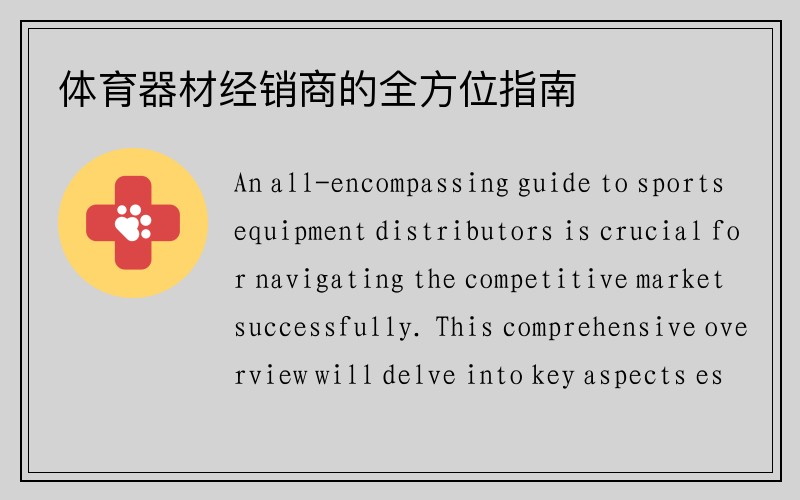体育器材经销商的全方位指南
An all-encompassing guide to sports equipment distributors is crucial for navigating the competitive market successfully. This comprehensive overview will delve into key aspects essential for establishing and growing a successful distribution business in the sports equipment industry.
1、市场分析与定位
Effective market analysis and positioning are fundamental for sports equipment distributors. Understanding current trends, consumer preferences, and competitor landscapes allows distributors to identify niche markets and opportunities for growth. Market segmentation based on sports types, demographics, and geographical factors helps tailor marketing strategies and product offerings.

Furthermore, strategic positioning involves aligning with brands that resonate with target audiences. Building strong relationships with manufacturers and suppliers ensures access to high-quality products and competitive pricing, which are crucial for maintaining a competitive edge.
Establishing a robust distribution network through partnerships with retail outlets, online platforms, and sports organizations enhances market reach and visibility.
2、供应链管理与物流优化
Efficient supply chain management and logistics optimization are critical for ensuring timely delivery and minimizing costs. Implementing inventory management systems that track stock levels, demand forecasts, and reorder points streamline operations and reduce the risk of stockouts.
Negotiating favorable terms with suppliers and logistics providers ensures cost-effective procurement and shipping. Utilizing technology such as RFID tracking and automated warehousing enhances efficiency and reduces errors in inventory management.
k1体育娱乐平台Moreover, adopting sustainable practices in logistics not only reduces environmental impact but also appeals to environmentally conscious consumers.
3、营销策略与品牌建设
Effective marketing strategies and brand building are crucial for creating visibility and driving sales. Developing a strong brand identity that resonates with target audiences through consistent messaging, visual branding, and customer engagement initiatives fosters brand loyalty.
Digital marketing channels such as social media, e-commerce platforms, and influencer partnerships play a pivotal role in reaching and engaging with consumers. Implementing targeted advertising campaigns based on consumer behavior data enhances ROI and conversion rates.
Furthermore, leveraging sponsorship opportunities with sports events, teams, and athletes enhances brand credibility and visibility in the sports community.
4、客户服务与售后支持
Exceptional customer service and post-sales support are essential for building long-term customer relationships and fostering repeat business. Providing personalized assistance, product education, and troubleshooting guidance ensures customer satisfaction and loyalty.
Implementing efficient returns and warranty policies instills confidence in consumers and enhances brand reputation. Gathering feedback through surveys and reviews enables continuous improvement and helps meet evolving customer expectations.
Investing in training programs for customer service teams ensures proficiency in product knowledge and problem-solving, thereby enhancing overall service quality.
总结:
Effective sports equipment distribution hinges on strategic market analysis, efficient supply chain management, impactful marketing strategies, and superior customer service. By leveraging these pillars, distributors can navigate challenges, capitalize on opportunities, and establish a strong foothold in the competitive sports equipment industry.
Establishing a successful distribution business requires diligence, adaptability, and a commitment to delivering exceptional value to customers.
